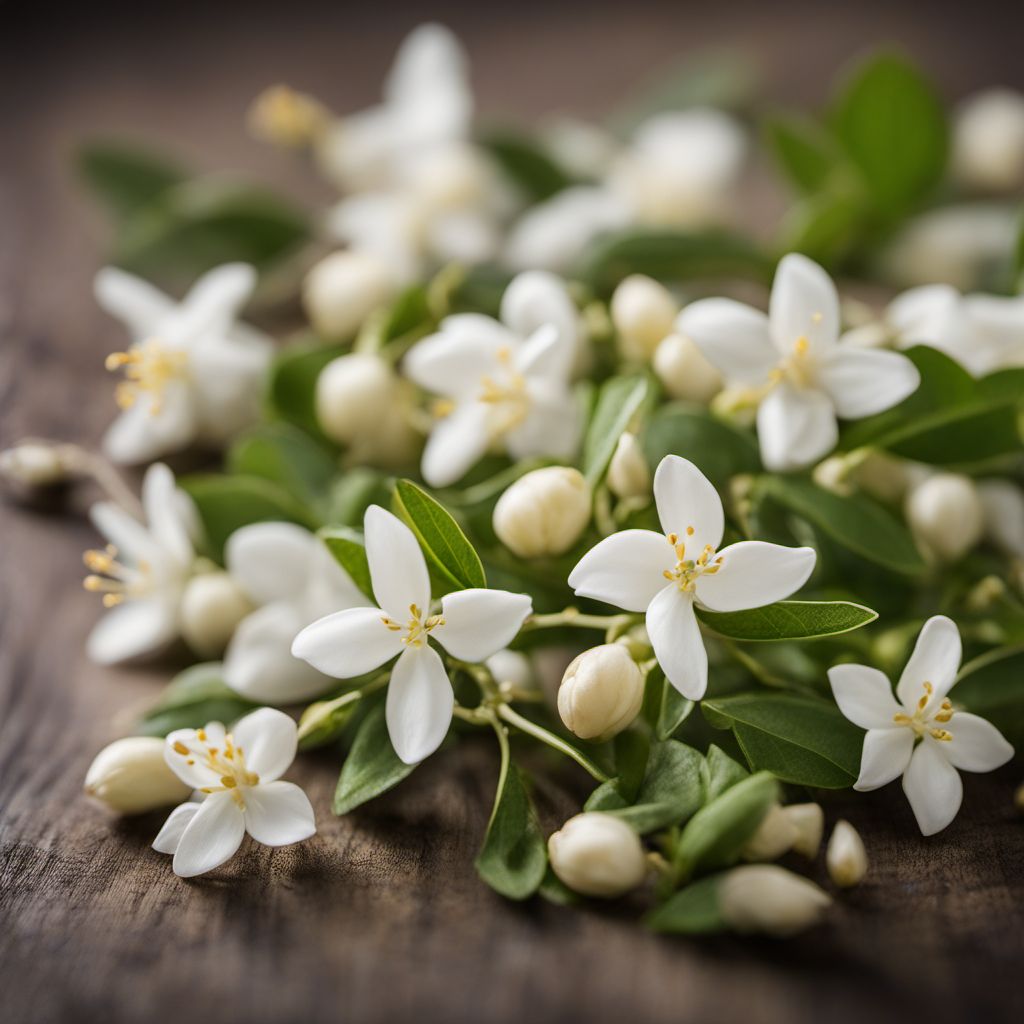
Ingredient
Common jasmine infusion flowers
Fragrant Blossoms: Unveiling the Delicate Beauty of Common Jasmine Infusion Flowers
Common jasmine infusion flowers, scientifically known as Jasminum officinale, are small, delicate blossoms that are prized for their intoxicating fragrance. These flowers have a star-shaped appearance with white petals and a yellow center. They are known for their sweet and floral aroma, which is often described as being reminiscent of a summer evening. The flowers have a soft and velvety texture, and their appearance adds a touch of elegance to any dish or beverage.
Origins and history
Common jasmine infusion flowers have a rich history that dates back centuries. Native to the Himalayas, these flowers have been cultivated in various parts of the world, including China, India, and Persia. They have been used in traditional Chinese medicine for their calming properties and are also associated with love and romance in many cultures. In ancient Persia, jasmine flowers were used to make perfumes and were highly prized by royalty.
Nutritional information
Common jasmine infusion flowers are primarily used for their aromatic qualities and are not consumed in large quantities for their nutritional value.
Allergens
Common jasmine infusion flowers are generally considered safe and do not pose significant allergenic risks. However, individuals with known allergies to flowers or pollen should exercise caution.
How to select
When selecting common jasmine infusion flowers, look for blossoms that are fresh and vibrant in color. Avoid flowers that are wilted or have brown spots. The flowers should have a strong and pleasant fragrance, indicating their freshness.
Storage recommendations
To maintain the freshness and fragrance of common jasmine infusion flowers, store them in an airtight container in a cool, dark place. Alternatively, you can freeze the flowers in ice cubes or dry them for later use.
How to produce
Common jasmine infusion flowers can be grown in a home garden or in pots. They require well-drained soil, ample sunlight, and regular watering. Pruning the plant regularly will help promote healthy growth and abundant blooms.
Preparation tips
Common jasmine infusion flowers are commonly used to make floral teas, syrups, and infusions. To prepare a jasmine tea, steep a few flowers in hot water for a few minutes and strain. The flowers can also be used to infuse flavor into desserts, such as custards, ice creams, or cakes. Additionally, they can be used as a garnish to add a touch of elegance to salads or cocktails.
Culinary uses
Common jasmine infusion flowers are widely used in Asian cuisines, particularly in Chinese, Thai, and Indian dishes. They are commonly used to flavor rice, stir-fries, and desserts. The flowers can also be used to make jasmine-infused oils or vinegars, which add a unique floral note to dressings and marinades.
Availability
Common jasmine infusion flowers are commonly available in regions where they are cultivated, such as China, India, and Southeast Asia.
